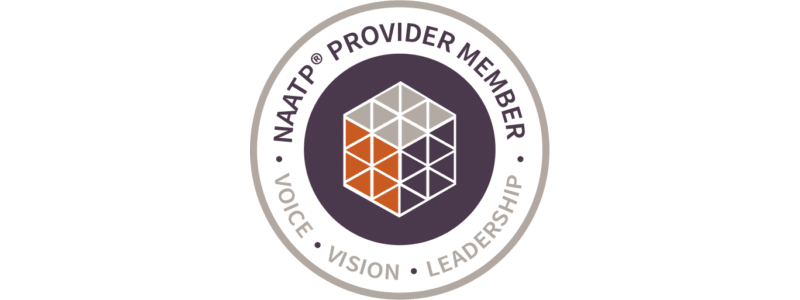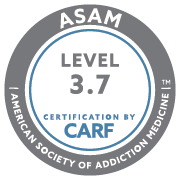Among Americans aged 12 years and older, 31.9 million are current illegal drug users (used within the last 30 days).11.7% of Americans, 12 and over, use illegal drugs. 53 million or 19.4% of people, 12 and over, have used illegal drugs or misused prescription drugs within the last year.
Among U.S. Young Adults (aged 18-25):
- 1 in 3 experienced a mental illness
- 1 in 10 experienced a serious mental illness
- 3.8 million had serious thoughts of suicide
- 1 in 5 young people report that the pandemic had a significant negative impact on their mental health
Drug use is highest among persons between the ages of 18-25 at 39% compared to persons aged 26-29, at 34%. 70% of users who try an illegal drug before age 13 develop a substance abuse disorder within the next 7 years compared to 27% of those who try an illegal drug after age 17.
What Are the Challenges College Students Face?
The challenges college students face today are immense. They’re under constant pressure to do well in school, make friends, and be involved in extracurricular activities. This can lead to substance abuse as a way to cope with the stress.
- Social anxiety, general anxiety, test anxiety, or panic attacks
- Family expectations or problems
- Depression, lack of energy or motivation, hopelessness, being overwhelmed, low self-esteem, homesickness, loneliness
- Relationship difficulties (emotional and physical aspects of intimate relationships)
- Dealing with conflict or difficult people
- Helping others in distress
- Eating problems or body image issues
- Grief from the loss of a loved one or a relationship breakup
- Stress, perfectionism, procrastination, time management
- Lack of confidence, assertiveness, self-esteem
- Past or recent trauma, abuse (physical, sexual, emotional), sexual assault, or stalking
- Sexuality or gender identity questions
Many college students don’t think they have a substance abuse problem because they don’t use drugs every day. However, substance abuse is more than just using drugs. It’s also about how the drug affects your life. For example, if you’re skipping class or not doing homework because you’re hungover, then you have a substance abuse problem.
Substance abuse can lead to serious problems, such as health problems, car accidents, and violence. It can also interfere with your ability to do well in school. If you think you might have a substance abuse problem, there are people who can help. Your college has counselors and health services that can help you with substance abuse issues.
How Prevalent are Alcohol and Drug Abuse Among College Students?
 It is estimated that nearly 20% of all college students suffer from some form of substance abuse. This problem is especially prevalent among those who attend college on a full-time basis. There are many factors that contribute to substance abuse among college students.
It is estimated that nearly 20% of all college students suffer from some form of substance abuse. This problem is especially prevalent among those who attend college on a full-time basis. There are many factors that contribute to substance abuse among college students.
Substance abuse is a serious problem that affects many college students. There are several things that college students can do to avoid substance abuse. First, they should try to identify the warning signs of substance abuse.
What Are the Risk Factors of Substance Abuse in College Students?
The risk factors of substance abuse in college students include changes in mood or behavior, social pressure, and availability of substances. Many college students turn to drugs or alcohol as a way to cope with these problems. There are several things that college students can do to avoid substance abuse. First, they should try to identify the warning signs of substance abuse.
These include changes in mood or behavior, withdrawal from social interactions and relationships, and a decline in academic performance. If college students notice any of these changes in themselves or their friends, they should seek help from a counselor or substance abuse treatment center.
Additionally, college students should make an effort to stay away from people who use drugs or alcohol. They should also avoid places where substance abuse is known to occur, such as parties or bars. Finally, college students should always keep in mind the potential consequences of substance abuse, which include addiction, health problems, and legal trouble.
How Can Substance Abuse Be Prevented in College Students?
Substance abuse can be prevented in college students by identifying the warning signs of substance abuse, avoiding high-risk situations, and staying away from places where substance abuse is occurring.
What Are the Consequences of Substance Abuse in College Students?
The consequences of substance abuse in college students include addiction, health problems, and legal trouble. Substance abuse can also lead to academic problems and financial difficulties.
What Are The Current Trends Of Substance Abuse in College Students
9.5 million or 3.8% of adults over the age of 18 have both a substance abuse disorder (SUD) and a mental illness. SUDs affect over 20 million Americans. Major Depressive Episodes (MDE) affect 3.5 million adolescents and 4.6 million young adults nationwide. 51.5 million or 20.6% of adults over the age of 18 have a mental illness.13.1 million or 5.2% of adults have a serious mental illness.
358,000 or 1.5% of all adolescents in the US have had both a SUD and an MDE within the last year. 1.2% of all adolescents had both a SUD and MDE resulting in severe impairment. 8.5% of adolescents with MDE were more likely to binge drink than those without (4.1%). 32.7% of adolescents with ME were more likely to use an illegal drug than those without (14%). Among adolescents with both an MDE and SUD, 65.7% received either substance abuse treatment at a specialty facility or mental health services.
What Are the Causes of Addiction and Substance Abuse in the Lives of College Students?
The causes of addiction and substance abuse in the lives of college students can be divided into three categories: psychological, social, and biological.
- Psychological causes include stress, anxiety, and depression
- Social causes include peer pressure and family problems
- Biological causes include genetics and brain chemistry
What Are the Long-term Effects of Drug Abuse in College Students?
 The long-term effects of drug abuse on college students can be devastating. substance abuse can lead to academic problems, social isolation, and mental health problems. Substance abuse can also lead to addiction, which is a chronic, relapsing disease that is characterized by compulsive drug seeking and use despite harmful consequences. Addiction is a serious problem that can have lasting effects on the individual’s health, relationships, and finances.
The long-term effects of drug abuse on college students can be devastating. substance abuse can lead to academic problems, social isolation, and mental health problems. Substance abuse can also lead to addiction, which is a chronic, relapsing disease that is characterized by compulsive drug seeking and use despite harmful consequences. Addiction is a serious problem that can have lasting effects on the individual’s health, relationships, and finances.
If you or someone you know is struggling with substance abuse, there are resources available to help. The Substance Abuse and Mental Health Services Administration (SAMHSA) has a National Helpline that can provide information about treatment options and support services in your area.
What Kind of Substance Use Disorders are Most Common?
The most popular substances abused by college students are alcohol, marijuana, and cigarettes. However, abuse of other substances, such as prescription drugs. Adderall is a potent prescription stimulant that is commonly misused by college students. Adderall abuse can lead to serious side effects, including heart problems, stroke, and psychiatric problems.
Marijuana use continued to rise among college students over the past five years and remained at historically high levels among same-aged peers who are not in college in 2020. Among college students specifically, there was also a significant increase in the annual use of hallucinogens and a substantial and significant drop in current alcohol use between 2019 and 2020.
Primarily used in higher-income settings by young people, “club drugs” such as:
Among lower-income users, the most commonly used drugs are inhalants such as paint thinner, gasoline, paint, correction fluid, and glue. Illegal drugs, such as cocaine and heroin, are also commonly abused by college students. These drugs can lead to addiction and other serious health problems. Among college students, rates of nicotine vaping reported in the past 30 days have increased from 6% in 2017 to 16% in 2018 and 22% in 2019.
Performance-enhancing substances, such as steroids, are often misused by college students in an effort to improve their athletic performance or appearance. However, these substances can have serious side effects, including liver damage and heart problems. The best way to prevent substance abuse is to get help if you think you may have a problem. There are many treatment options available for substance abuse and addiction.
What Are Some Warning Signs that Someone May Have a Substance Use Problem?
Some warning signs that someone may have a substance use problem include:
- Using more of the substance than intended or using it for longer than intended
- Continued use despite negative consequences
- Unsuccessful attempts to cut down or quit
- Spending a lot of time obtaining, using, or recovering from the substance
- Giving up on previously held interests and hobbies
- Withdrawing from family, friends, and peers
- The decline in personal hygiene
- The increase in risk-taking behaviors
Are There Treatment Options Available for College Students?
There are treatment options available for substance abuse and addiction. If you or someone you know needs help, there are resources available. Some treatment options include:
- Detoxification: Detoxification is the process of allowing the body to rid itself of a substance. This can be done with or without medical assistance.
- Residential Treatment: Inpatient treatment is when someone stays at a facility for a set period of time, usually around 28 days, and receives 24-hour care. During this time, they will receive around-the-clock care and supervision.
- Outpatient Treatment: Outpatient treatment does not require individuals to stay at the facility overnight. Instead, they visit the facility for treatments and then return home.
- Sober Living Homes: A sober living home is a place where individuals live who are in recovery from substance abuse. These homes provide structure and support to help residents maintain sobriety.
- Dual Diagnosis Treatment: Dual diagnosis treatment is a method of treating substance abuse and mental health disorders at the same time. This is important because oftentimes substance abuse can be a way of self-medicating for underlying mental health issues.
- Campus Resources: There are campus resources available to help students who are struggling with substance abuse. These can include things like counseling, support groups, and substance abuse education.
Your Long-Term Recovery is Attainable
If you or someone you know is struggling with substance abuse, don’t hesitate to reach out for help. There are many people who care and want to see you succeed in your recovery. There are many different types of substance abuse treatment available at New Directions for Women, and it’s important to find one that will work best for you or your loved one. If you’re not sure where to start, you can contact a substance abuse helpline for more information on treatment options and how to find a program that’s right for you.
References:
https://ab.edu/counseling-services/common-issues-for-college-students/









